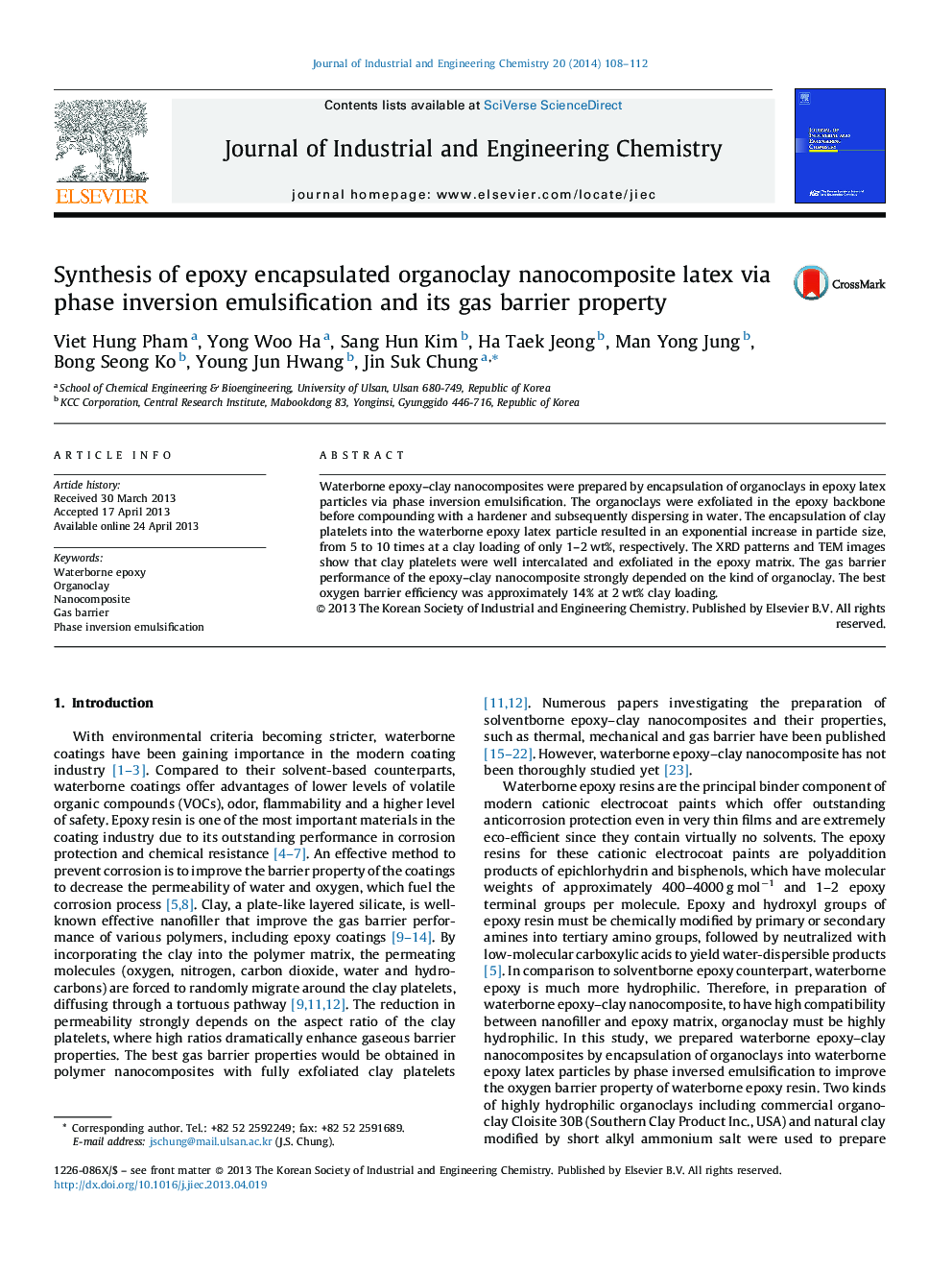| Article ID | Journal | Published Year | Pages | File Type |
|---|---|---|---|---|
| 227831 | Journal of Industrial and Engineering Chemistry | 2014 | 5 Pages |
Waterborne epoxy–clay nanocomposites were prepared by encapsulation of organoclays in epoxy latex particles via phase inversion emulsification. The organoclays were exfoliated in the epoxy backbone before compounding with a hardener and subsequently dispersing in water. The encapsulation of clay platelets into the waterborne epoxy latex particle resulted in an exponential increase in particle size, from 5 to 10 times at a clay loading of only 1–2 wt%, respectively. The XRD patterns and TEM images show that clay platelets were well intercalated and exfoliated in the epoxy matrix. The gas barrier performance of the epoxy–clay nanocomposite strongly depended on the kind of organoclay. The best oxygen barrier efficiency was approximately 14% at 2 wt% clay loading.
